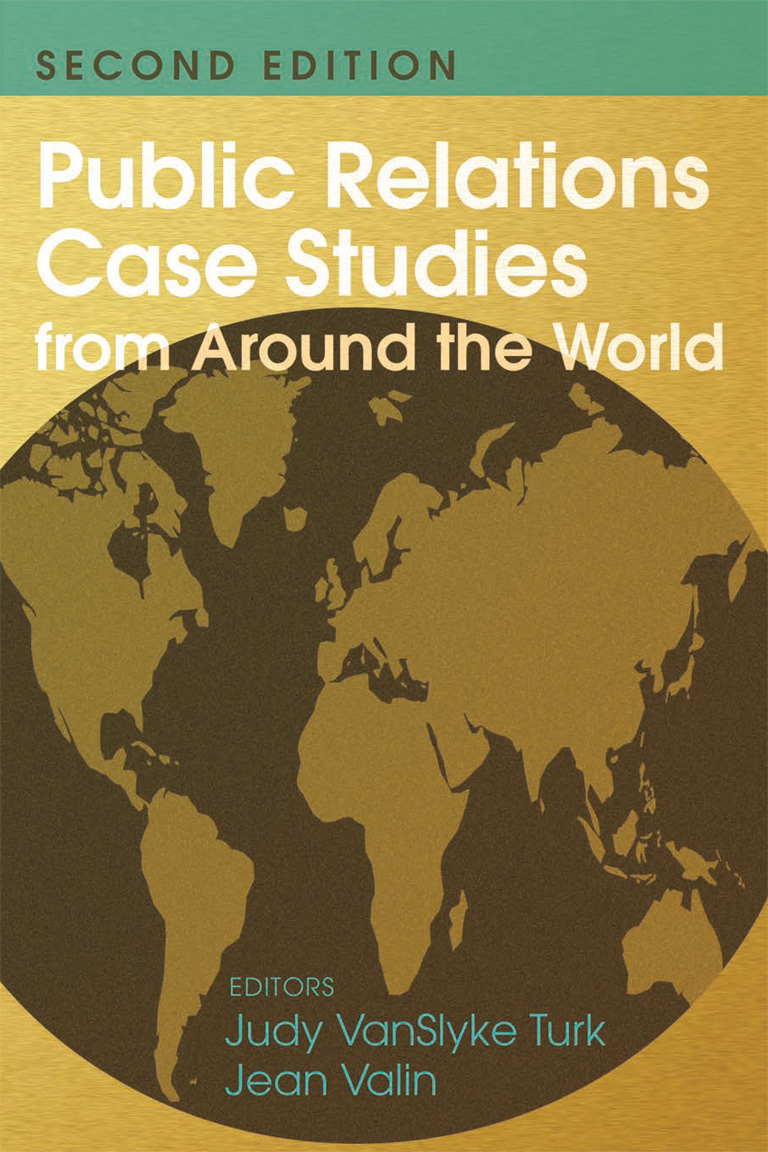Public Relations Case Studies from Around the World by Turk Judy VanSlyke / Valin Jean

Author:Turk, Judy VanSlyke / Valin, Jean
Language: eng
Format: epub
Publisher: Peter Lang Publishing, Inc.
Published: 2017-08-30T16:00:00+00:00
SITUATION ANALYSIS
Even though Ebola could be avoided and brought under control if basic infection prevention and control protocols (IPC) were observed, the level of illiteracy coupled with poverty worsened the situation. The locals were not informed about IPC, neither were they receptive to information for a long time because there were always one or several counter opinions that were deeply rooted in traditional beliefs and methods of curing all diseases. It was difficult to convince the receptive few, because most of the IPC measures were strict measures that required many people to quit their means of livelihood for a while. This was the case with people who sold or hunted for “bush meat”—an African delicacy—for a living. Other people such as public transporters otherwise known as “okada riders” were also affected in their line of business. These are mostly young men who make a living ← 195 | 196 → by giving rides to passengers on their motorcycles. There was no way to determine the health status of either the rider or the previous passengers who have been on the “okadas”. This also affected public transit buses and cabs as well. Passengers became weary of taking taxicabs that already had passengers in the rear seats. The usual practice before the Ebola epidemic was to have four passengers in the rear seats of taxicabs, and two passengers if taking the “okada”. With that kind of seating arrangement, it was almost impossible to avoid body contacts between the passenger and the rider, neither were there any measures put in place to sanitize the seats before the next passenger sits. Because Ebola campaign messages strongly persuaded people to avoid body contacts, it became a tough decision for commuters to choose public riders. This explains why the resistance was strong and sometimes even violent.
The response to the EVD outbreak in Liberia, Sierra Leone, and Guinea by international organizations and especially the African Union was faced with the challenges of convincing the people in the affected countries that the EVD outbreak was real and not politically master-minded by the western countries and governments of the affected countries. Another challenge was to convince the people to trust the western medical intervention teams or organizations. In parts of Africa, there is still a great deal of distrust in orthodox medicine, which was widely termed the “white man’s medicine” during this crisis in Guinea, Liberia, and Sierra Leone. Rapport building and establishing trust with the host communities especially in the rural areas of the affected countries was also a fairly difficult challenge. Another challenge was the ability to effectively communicate with the people without offending their traditions, on sensitive issues tied to religious beliefs and practices, the tenets of which encouraged the spread of the EVD virus. Such religious practices like washing of dead bodies, initiation practices of local cults, unsafe burial practices, and belief in the curative powers of witch doctors and sorcerers were encountered.
Technically, other challenges were posed by issues such as inadequate funding, lack of
Download
This site does not store any files on its server. We only index and link to content provided by other sites. Please contact the content providers to delete copyright contents if any and email us, we'll remove relevant links or contents immediately.
| Advertising | Consumer Behavior |
| Customer Service | Marketing |
| Public Relations | Sales & Selling |
| Search Engine Optimization |
Influence: The Psychology of Persuasion by Robert B. Cialdini(4715)
The Miracle Morning by Hal Elrod(4637)
The Hacking of the American Mind by Robert H. Lustig(4318)
Pre-Suasion: A Revolutionary Way to Influence and Persuade by Robert Cialdini(4145)
Unlabel: Selling You Without Selling Out by Marc Ecko(3588)
Ogilvy on Advertising by David Ogilvy(3508)
Hidden Persuasion: 33 psychological influence techniques in advertising by Marc Andrews & Matthijs van Leeuwen & Rick van Baaren(3472)
Purple Cow by Seth Godin(3139)
Who Can You Trust? by Rachel Botsman(3087)
Kick Ass in College: Highest Rated "How to Study in College" Book | 77 Ninja Study Skills Tips and Career Strategies | Motivational for College Students: A Guerrilla Guide to College Success by Fox Gunnar(3075)
The Marketing Plan Handbook: Develop Big-Picture Marketing Plans for Pennies on the Dollar by Robert W. Bly(2975)
This Is Marketing by Seth Godin(2971)
I Live in the Future & Here's How It Works by Nick Bilton(2935)
The Power of Broke by Daymond John(2897)
Building a StoryBrand by Donald Miller(2841)
The Tipping Point by Malcolm Gladwell(2827)
The 46 Rules of Genius: An Innovator's Guide to Creativity (Voices That Matter) by Marty Neumeier(2796)
Draw to Win: A Crash Course on How to Lead, Sell, and Innovate With Your Visual Mind by Dan Roam(2734)
Market Wizards by Jack D. Schwager(2643)
